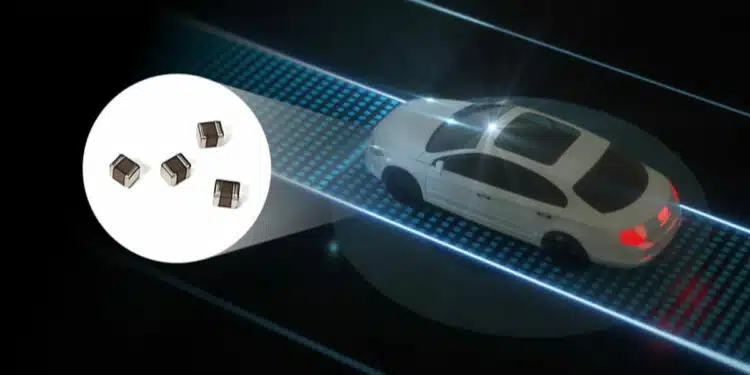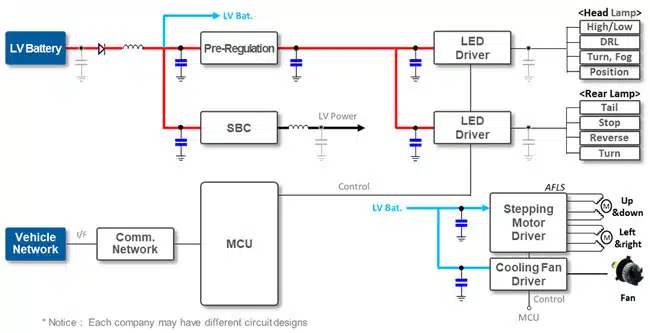Samsung Electro-Mechanics achieves the highest capacitance of 22uF for automotive MLCC ceramic capacitors in the 1210 inch (3.2×2.5mm) size, with X7R characteristics (-55 to 125℃) and a rated voltage of 35V.
The new compact high-capacitance multilayer ceramic capacitor CL32B226KLV6PN#, is designed for use in constrained spaces such as the 12V battery systems and 48V/12V bidirectional DC/DC converter output stages in automobiles.
Mass production has begun, and samples are available upon request.
This capacitor maintains the same size (1210 inch) and high capacitance (22uF) as the existing X7R lineup, but with an increased rated voltage from 16V to 35V.
In the power output stage, it is required to have high voltage proof characteristics that can be stably used under Electrical Over Stress (EOS) conditions, as well as the miniaturization and high capacitance of MLCCs.
Samsung Electro-Mechanics utilized proprietary fine-particle ceramic and electrode materials, along with ultra-precision stacking techniques, to develop this high-capacitance MLCC in the 1210 inch size, rated at 35V.
| Samsung | Size | Capacitance | Rated Voltage | TCC |
|---|---|---|---|---|
| CL32B226KLV6PN# | 1210 inch | 22㎌ | 35V | X7R |
X7R: Capacitance change rate in the temperature range of -55°C to 125°C: ±15%
LED lighting system application
The automotive lighting field is experiencing remarkable progress as LED lamps are increasingly being integrated into compact vehicles, in line with the industry’s move towards environmentally friendly and intelligent vehicle technologies. The smartification of headlamps and the evolution of rear lamp design have led to an increase in the number of LED channels, resulting in higher power consumption in vehicles. As a result, the importance of maintaining the effective capacitance of multilayer ceramic capacitors (MLCCs) in high temperature environments (up to 125°C) has become paramount.
In response to this demand, Samsung Electro-Mechanics continues to expand and supply its range of high capacitance MLCC products. This expansion includes MLCCs with X7R characteristics and rated voltages of the newly released 35V parts and above.
)
































